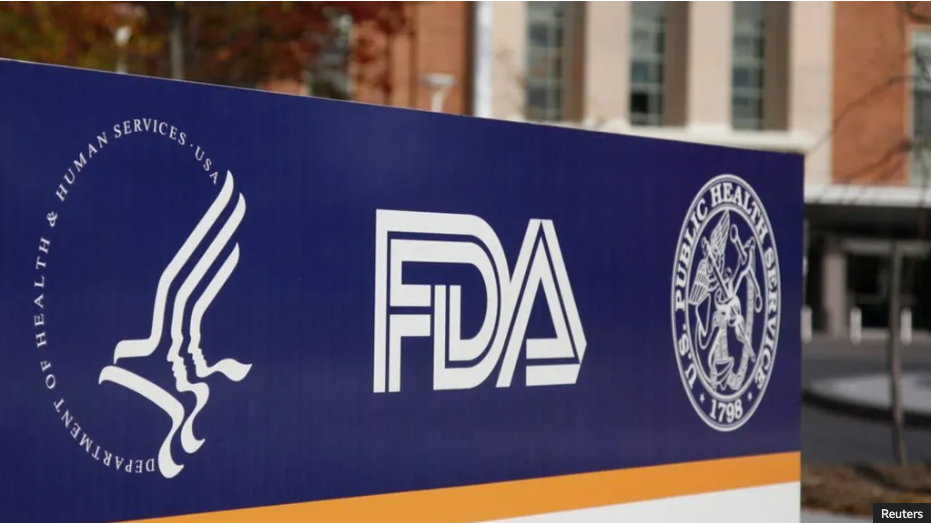June 24th – July 1st, 2022
CannTeen Study Results: Implications of Cannabis Use During Adolescence
Results from the study showed that adolescent users were significantly more likely to have severe cannabis use disorder (CUD) compared to adult users, raising the importance to develop cannabis harm reduction campaigns for this particular group.
Adolescence is the transitional period between one’s childhood and adulthood, characterized by physical, social, developmental, and psychological changes.[1] During this time, individuals often experience a significant shift in the balance of power, owing to the increase in their responsibilities, as well as their freedoms. Although the guardian’s role evolves during this period, it is important for caregivers to educate younger generations on the importance of their actions, especially regarding their health and well-being, as certain decisions can have detrimental impacts on their lives.
Along those lines, one of the common plights faced by teens in America is drinking alcohol and drug addiction. [2] According to the National Institute on Drug Abuse, about 1 in 6 people who start using cannabis as a teen, and 25-50 percent of people who use it every day, become addicted, making this an alarming problem. [3]
In order to better understand the ramifications of adolescent cannabis use, Lawn et al., launched the CannTeen Study, investigating the effects of cannabis on adolescents vs. adult users’ mental health. [4] The group performed a cross-sectional analysis of 76 adolescent users and 71 adolescent users via a wide range of measures including the Diagnostic and Statistical Manual (DSM-5) Cannabis Use Disorder (CUD), Beck Depression Inventory, Beck Anxiety Inventory and Psychotomimetic States Inventory-adapted. Results showed that adolescent cannabis users were at greater risk for severe CUD, which increased their vulnerability to poorer mental health symptoms, including depression, anxiety, and psychotic-like symptoms.
The authors concluded: “Adolescent cannabis users have greater psychotic like symptoms than adult cannabis users and adolescent controls, through an additive effect…However, adolescents have an amplified risk of severe CUD relative to adults, which in combination with being young, augments symptoms of mental ill health. Cannabis harm reduction campaigns should therefore highlight the greater risk of addiction to cannabis during adolescence.”
Amotivational Syndrome: Are Cannabis Consumers More Likely to Display a Lack of Motivation?
Compared to healthy controls, cannabis consumers did not show signs of amotivational syndrome but did exhibit a greater likelihood to exert more effort for reward, a new study suggests.
Despite potentially holding many therapeutic disease applications, the negative stigma surrounding cannabis use continues to prevail in many countries, including in the United States. In recent years, studies have suggested that chronic cannabis use can lead to lower educational attainment, reduced income, and an increase in car accidents. [5] Additionally, reports have suggested that it can also decrease one’s motivation including impairments in school and work performance or issues in maintaining relationships with family and peers. [6] This is referred to as amotivational syndrome, a term first coined by Dr. Smith in the 1960’s, denoting the diminished desire to work or to compete among young people who consumed cannabis frequently. However, the present literature offers mixed results on the topic.[7]
In order to investigate the effects of cannabis use on effort-based decision making and self-reported apathy, a group of researchers from Oregon State University designed a between-subjects study in which each of the variables were compared between frequent cannabis users and healthy controls.[8] The following variables were self-reported by participants using the Apathy Evaluation Scale and Expenditure for Rewards Task: substance use, depression, apathy, sensation seeking, and task performance of effort-based decision-making. The findings showed that there were no significant differences in self-reported apathy between the two groups. However, results indicated that frequent cannabis users displayed an increased likelihood of exerting effort for a reward, suggesting a greater motivation in comparison to healthy controls.
The group concluded: “Results of the current study, along with recent findings by others suggest that lack of motivation may not be a key behavioral characteristic of frequent cannabis users. Further, these results could better inform the general public in that they do not provide support for amotivational syndrome, the belief that cannabis users exhibit lack of motivation or effort that is widely held within culture and media.”
Is There a Link Between Cannabis Use & Prevalent Angina in Individuals with Diabetes?
Results show that cannabis use in individuals with diabetes was associated with prevalent angina, supporting the evidence that it may have negative impact on cardiovascular health.
Given the rising consumption of cannabis in the United States, both medically and recreationally, it is important to identify and study the direct and indirect health implications of this substance. Cardiovascular diseases are the leading cause of death in the United States, associated with various risk factors, including diabetes and cannabis use. [9] When a diabetic patient suffers from high blood sugar, there is an increased likelihood of damaging macrovascular and microvascular blood vessels, as well as nerves responsible for controlling the heart.[10] A recent study showed that Δ9-tetrahydrocannabinol (Δ9-THC), the main psychoactive component of cannabis, causes inflammation of the endothelial cells that line the interior of blood vessels, and therefore may increases the likelihood of a stroke. [11] In both scenarios, reduced blood flow to the heart can cause angina, or severe chest pains.
Given the similar effects of diabetes and cannabis use on cardiovascular disease, a group of researchers from Wake Forest School of Medicine hypothesized that cannabis use would be associated with prevalent angina in individuals with diabetes. [12] In order to investigate the hypothesized relationship between cannabis use and prevalent angina in diabetic individuals, the authors utilized data from 1314 diabetic participants using the National Health and Nutrition Examination Survey (NJANES), a program created to assess overall health of Americans. Excluding participants younger than 18 years of age, they primarily focused on responses to questions relating to cannabis use and history of angina, utilizing multivariable logistic regression to estimate the association between the two variables. Results indicated that frequent cannabis users (i.e., at least once per month for at least one year) had greater odds of prevalent angina than compared to those who never used. However, the authors noted a few study limitations including a bias self-reported cannabis use, lack of data on the route of cannabis administration and dosage.
The group concluded: “Among individuals with diabetes, there is a significant association between cannabis use and prevalent angina with apparent dose response. This finding supports emerging evidence that cannabis may have negative CV health effects, and an individualized CV risk assessment should be pursued among those with diabetes.”
Cannabidiol-Extracellular Vesicles (CBD-EV) & Hepatocellular Carcinoma (HCC)
EVs derived from high CBD content can act as natural nano-carriers containing bioactive phytochemicals to induce anticancer signaling, a new study suggests,
Extracellular vesicles (EVs) are lipid bound vesicles secreted by different cell types into the extracellular space. [13] Plant-derived EVs contain bioactive molecules with promising cellular and physiological functions and are gaining popularity in the field of therapeutics due to their antioxidant, anti-inflammatory, and anti-cancerous properties. [14],[15],[16] In recent years, phytocannabinoids, such as Δ9-tetrahydrocannabinol (Δ9-THC) and cannabidiol (CBD), have been of great interest due their potential anticancer and anti-proliferative characteristics. [17],[18]
Hepatocellular carcinoma (HCC) is the most common type of primary liver malignancy and is a leading cause of cancer-related death worldwide. [19] HCC incidence has been growing and is expected to increase until 2030. [20] Because of the late diagnosis in most HCC patients, chemotherapy is the preferred method of choice. [21] However, there is a need to explore alternative therapeutic strategies which would target genes involved in apoptosis mechanisms.
Given the growing prominence of CBD in cancer treatment and management and the promising use of plant-derived EVs, Tajik et al., hypothesized that CBD EVs (high and low CBD content) may deliver phytochemicals to cancerous cells and trigger anticancer responses. [22] Utilizing cytotoxicity assays, the group found that high CBD content EVs strongly decreased the viability in two HCC cell lines in a dose and time-dependent manner compared to the low CBD content EV. Additionally, high CBD content EVs induced cell death via activation of mitochondrial-dependent apoptosis signaling.
The authors concluded: “Altogether, our findings suggest that the EVs derived from cannabis can act as natural nano-carriers containing bioactive phytochemicals and be used in cancer research. The possible use of these biomaterials in combination with chemotherapy drugs can open a new gateway for cancer treatment.”
References:
[1] Christie D, Viner R. Adolescent development. BMJ 2005;330(7486):301-4. DOI: 10.1136/bmj.330.7486.301
[2] https://www.pewresearch.org/social-trends/2019/02/20/most-u-s-teens-see-anxiety-and-depression-as-a-major-problem-among-their-peers/, assessed on July 1st, 2022
[3]https://nida.nih.gov/sites/default/files/teens_brochure_2013.pdf?msclkid=72d3abadac6411ec8d761ff7abf8f7c2#:~:text=Research%20shows%20that%20approximately%209,50%20percent%20among%20daily%20users, assessed on July 1st, 2022
[4] Lawn W, Mokrysz C, Lees R, et al. The CannTeen Study: Cannabis use disorder, depression, anxiety, and psychotic-like symptoms in adolescent and adult cannabis users and age-matched controls. J Psychopharmacol 2022:2698811221108956. DOI: 10.1177/02698811221108956.
[5] Carliner H, Brown QL, Sarvet AL, Hasin DS. Cannabis use, attitudes, and legal status in the U.S.: A review. Prev Med 2017;104:13-23. DOI: 10.1016/j.ypmed.2017.07.008.
[6] Pacheco-Colon I, Limia JM, Gonzalez R. Nonacute effects of cannabis use on motivation and reward sensitivity in humans: A systematic review. Psychol Addict Behav 2018;32(5):497-507. DOI: 10.1037/adb0000380
[7] Smith DE. Acute and Chronic Toxicity of Marijuana. Journal of Psychedelic Drugs 1968;2(1):37-48. DOI: 10.1080/02791072.1968.10524399
[8] Vele KC, Cavalli JM, Cservenka A. Effort-based decision making and self-reported apathy in frequent cannabis users and healthy controls: A replication and extension. J Clin Exp Neuropsychol 2022:1-17. DOI: 10.1080/13803395.2022.2093335
[9] DeFilippis EM, Bajaj NS, Singh A, et al. Marijuana Use in Patients With Cardiovascular Disease: JACC Review Topic of the Week. J Am Coll Cardiol 2020;75(3):320-332. DOI: 10.1016/j.jacc.2019.11.025.
[10] https://www.cdc.gov/diabetes/library/features/diabetes-and-heart.html, assessed on July 1st, 2022
[11] Wei TT, Chandy M, Nishiga M, et al. Cannabinoid receptor 1 antagonist genistein attenuates marijuana-induced vascular inflammation. Cell 2022. DOI: 10.1016/j.cell.2022.04.005
[12]Skipina TM, Upadhya B, Soliman EZ. Cannabis Use Is Associated with Prevalent Angina in Individuals with Diabetes. Cannabis Cannabinoid Res 2022. DOI: 10.1089/can.2021.0175.
[13] Zaborowski MP, Balaj L, Breakefield XO, Lai CP. Extracellular Vesicles: Composition, Biological Relevance, and Methods of Study. Bioscience 2015;65(8):783-797. DOI: 10.1093/biosci/biv084.
[14] Zhuang X, Deng ZB, Mu J, et al. Ginger-derived nanoparticles protect against alcohol-induced liver damage. J Extracell Vesicles 2015;4:28713. DOI: 10.3402/jev.v4.28713.
[15] Zhang M, Viennois E, Prasad M, et al. Edible ginger-derived nanoparticles: A novel therapeutic approach for the prevention and treatment of inflammatory bowel disease and colitis-associated cancer. Biomaterials 2016;101:321-40. DOI: 10.1016/j.biomaterials.2016.06.018.
[16] Raimondo S, Naselli F, Fontana S, et al. Citrus limon-derived nanovesicles inhibit cancer cell proliferation and suppress CML xenograft growth by inducing TRAIL-mediated cell death. Oncotarget 2015;6(23):19514-27. DOI: 10.18632/oncotarget.4004.
[17] Afrin F, Chi M, Eamens AL, et al. Can Hemp Help? Low-THC Cannabis and Non-THC Cannabinoids for the Treatment of Cancer. Cancers (Basel) 2020;12(4). DOI: 10.3390/cancers12041033.
[18] Lukhele ST, Motadi LR. Cannabidiol rather than Cannabis sativa extracts inhibit cell growth and induce apoptosis in cervical cancer cells. BMC Complement Altern Med 2016;16(1):335. DOI: 10.1186/s12906-016-1280-0.
[19] McGlynn KA, Petrick JL, El-Serag HB. Epidemiology of Hepatocellular Carcinoma. Hepatology 2021;73 Suppl 1:4-13. DOI: 10.1002/hep.31288.
[20] Vara D, Salazar M, Olea-Herrero N, Guzman M, Velasco G, Diaz-Laviada I. Anti-tumoral action of cannabinoids on hepatocellular carcinoma: role of AMPK-dependent activation of autophagy. Cell Death Differ 2011;18(7):1099-111. DOI: 10.1038/cdd.2011.32.
[21] Ogunwobi OO, Harricharran T, Huaman J, et al. Mechanisms of hepatocellular carcinoma progression. World J Gastroenterol 2019;25(19):2279-2293. DOI: 10.3748/wjg.v25.i19.2279.
[22] Tajik T, Baghaei K, Moghadam VE, Farrokhi N, Salami SA. Extracellular vesicles of cannabis with high CBD content induce anticancer signaling in human hepatocellular carcinoma. Biomed Pharmacother 2022;152:113209. DOI: 10.1016/j.biopha.2022.113209.






